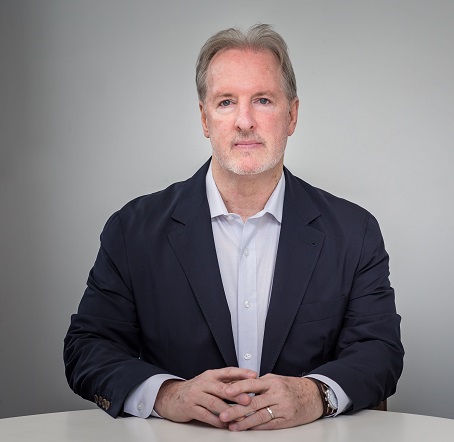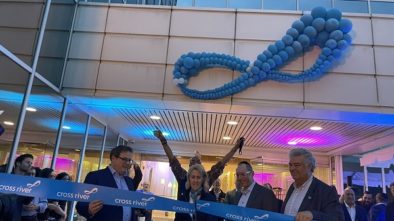Bob Cortright Talks about DriveWealth’s Evolution and Where $56.7 Million Will Take the Company
In late October, the news was out: Chatham-based fintech startup DriveWealth had secured $56.7 million during its Series C funding round.
The round was led by current investor Point72 Ventures (Stamford, Conn.), with participating investments from Raptor Group (New York), SBI Holdings (Tokyo) and Route 66 Ventures (Alexandria, Va.).
DriveWealth also welcomed two new investors — Mouro Capital (London, U.K.) and Fidelity International Fintech Strategic Ventures (London, U.K.).
NJTechWeekly.com has been covering DriveWealth since its early days, when it made an appearance at Aaron Price’s first Propeller festival (now Propelify), in 2016, and John Shammas, then lead front-end developer at DriveWealth, came to the NJ Tech Meetup to explain what the company was doing. The company’s brokerage operations are in Chatham and its technology group is in Jersey City.
We thought that now was a good time for an interview with DriveWealth founder and CEO Bob Cortright, as DriveWealth has clearly come a long way.
Please tell us your founding story.
I had spent my entire career with large banks and investment banks on the trading side, specializing in risk management. In late 2000, early 2001, I jumped off my banking career and created a company called “FX Solutions,” the first retail foreign exchange trading solution available around the world. This was when people were first starting to get into electronic trading, and it was my first experience building fintech before it was called “fintech.”
While I was building this company, I realized that most people around the world didn’t have access to buying stock in an efficient way. Only the top 2 percent or so could actually access the stock market outside of the United States.
After the financial crash of 2008 and 2009, people started building companies like Betterment and Wealthfund. Later on, came Robinhood. These B2C companies were trying to democratize or disrupt the legacy firms. However, many of these applications were sitting on top of old technology infrastructure. I felt that, as this industry progressed, the old legacy systems weren’t going to have the right infrastructure to provide a great user experience. What people need is a significant modern infrastructure to plug into to bring engaging financial products to the retail customer.
So far, we’ve seen some really good products in the digital wallet and individual financial services industry. I think the next big thing is savings and investment infrastructure. And that’s what DriveWealth is built from the ground up to service: all these different new applications and experiences for people to get more involved — at a much earlier stage in their financial life — into savings and investing. DriveWealth is now getting a lot more exposure, now that we’re powering a lot of these new, interesting financial apps around the world, like the Cash App and MoneyLion. We see this as a rapidly evolving micro-lend finance trend.
Talk about your first product.
That was our fractional shares product, and it was a way to demonstrate that people could buy stocks even if they couldn’t afford a share in a dollar amount. I always thought that people thought in terms of dollar amounts. But what if you could rationalize the product and allow people at any stage of their wealth and finances to get involved?
The thing about the youth market is they have time on their side; the biggest asset of a young person is time. The idea was that they had to save up a bunch of money before they could make something of it. They lost a lot of time, and they lost experience doing it themselves. So we wanted to engage them early, allowing them to really take advantage of compounding, dollar cost averaging and diversification around the portfolio, no matter what investment, whether it’s $25 a month, or $45,000 a month, or $25,000. The earlier you start, the more you’re engaged with it, the better off you’re going to become over the long term. It’s a mechanical process, but the idea is that you could rationalize investments. Someone could buy a portfolio of their 10 favorite stocks for $100.
So how has DriveWealth evolved?
We wanted to disrupt and change the way people interact with brokerages, and so we developed the fractional shares product. We built our own API cloud-driven infrastructure. We made it very efficient and affordable for companies to offer small, different types of investments. So you could do a robo product, you could do a self-directed product, you could do stock back, you could do all kinds of things that will allow a person to be engaged in their savings and investments or their financial life.
So, for instance, you go to Starbucks, and you buy a $5 latte. Companies are coming up with products where you’ll get 50 cents back, that can be put into a savings or investment portfolio. If you think about a young person, an avid consumer of Starbucks, Netflix, Amazon, Apple, Facebook, and they are getting cash back, right there, you have a pretty good portfolio.
In the very product-centric past, the bank would sell you a product, right? At the bank, the orders department doesn’t know what the investment department’s doing with a customer. There’s no dialogue. But now, what I call “embedded finance” is very holistic around the customer. It knows how you’re behaving. And it uses data intelligence to make a customer’s financial life a lot more efficient. The way you connect to consumers is by building portfolios around their consumption. Over the years, 50 cents each time you buy a latte adds up. And now you have an investment in Starbucks stock. But more importantly, it gets you over the hurdle of fear of investing, the intimidation of investing. You are engaged in the process, and you start to see diversification and compounding at work. It educates people, I think, at a lot earlier stage in their lives.
So here you are now, having raised $56.7 million. Tell us about the raise.
We started contemplating another raise about two years after our Series B, in November of 2017. Digital transformation was really accelerating at the end of 2019, right before the pandemic, and we saw how successful companies like us, who offered digital transformation, were. We were putting together our fund-raising deck, but we didn’t get the deck together until late January, early February 2020. And then the pandemic hit hard.
Our business exploded in terms of people wanting to work digitally to build product. So, we decided to reach out to our existing investors. They were behind us. They saw the growth that was happening in the marketplace and the acceleration of digital transformation, and we decided, ‘let’s do an internal round. Let’s get through the pandemic, see when the clouds clear, and we can make another decision.’
It was a great decision we made. Those guys came in really strong. And we added two more investors that are strategic for us around the world: Mouro Capital, the fintech investment spinout from Santander, a global bank and Fidelity International Ventures, which is part of Fidelity. And we have our existing investors, who all stepped up, with Point72 leading the round. And that’s how we’ve grown tremendously since then already. They’re putting their shoulders behind us and really helping. So, I would imagine that, maybe within the next six months to a year, we’ll be talking about the next round, because we want to get to some really interesting things in terms of our growth phase for the business.
So how will you spend the money?
We want to build out the technology backbone of our business, so we hired a lot software developers and engineers all throughout New Jersey and throughout the country. I think, as of today, we’re in the mid-80s in terms of head count. We’ll be hiring another 30 or 50 people in our technology group over the next six to nine months.
My goal is to build out the most modern fintech infrastructure for brokerage there is, so we’ll be making some acquisitions you’ll hear about very shortly around the execution and trading side of the business, to effectively execute for our partners. It’s about how we go to the market and work with the market on the institutional side, as well.
Also, we are going to go self-clearing at some point. We will be a multi-clearing company, but we want to do it self-serve, so we can be as efficient from a cost standpoint as possible, so our partners can pass along really good financial products at the lowest cost to their customers. We also needed to add cash to our balance sheet, because we are partnering with very high-quality, large partners and to show that cash position is very important.
We have customers in 153 countries today. We work with partners in every part of the continent and in every economy around the world. We’re growing tremendously in Latin America, we see great growth in India, we see a lot of things happening in the Africa region. They’re just leapfrogging technology. They’re really coming into their own with affluence and sophistication in fintech. We still obviously do a lot in Southeast Asia. And we’re really, really positive about the United States and [about] the great companies that are coming up and building really great financial ecosystems for the next generation.




